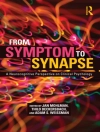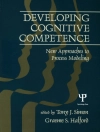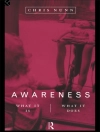A complete guide to key intelligence and achievement tests and
their effective use
The tools used in the assessment process have changed
dramatically in recent years. School and clinical psychologists
need a comprehensive yet focused resource to which they can turn to
learn the basics of key intelligence and achievement tests and how
to use them in their assessments of children and adults. With its
practical and straightforward presentation, Practitioner’s Guide
to Assessing Intelligence and Achievement provides that
resource.
Coedited by two well-known and respected scholars and
researchers, Jack Naglieri and Sam Goldstein, the content in this
timely book combines traditional and new conceptualizations of
intelligence as well as ways to measure achievement. Truly readable
and user-friendly, this book provides professionals with a single
source from which to examine ability and achievement tests along
the same general criteria.
Each chapter is written by a leading scholar and test developer
and is consistently structured for easy comparison of each test
that is examined. Coverage includes:
* The theory underlying each test
* Description of each test
* Tips for administering and scoring each test
* Standardization, norms, and reliability of each scale
* Practical guidance for the use of each test
* Correspondence of each test to IDEA
A practical tool designed to aid clinical psychologists in
understanding the strengths and weaknesses of the various tests
presented, Practitioner’s Guide to Assessing Intelligence and
Achievement provides students and practitioners with the
information they need for their practice and testing efforts to be
consistent with recent updates in the field and how those
assessment instruments relate to changes in the laws that influence
test use.
Inhoudsopgave
Preface.
Foreword.
PART I INTRODUCTION.
Chapter 1 Understanding the Strengths and Weaknesses of
Intelligence and Achievement Tests (Jack Naglieri, Sam
Goldstein).
Chapter 2 Current Issues in the Assessment of Intelligence,
Specific Learning Disability, and Attention Deficit Hyperactivity
Disorder (Sam Goldstein, Sean Cunningham).
PART II INTELLIGENCE TESTS MEASURING DIVERSE
ABILITIES.
Chapter 3 The Cognitive Assessment System (Jack A. Naglieri,
Cara Conway).
Chapter 4 The Kaufman Assessment Battery for Children –
Second Edition (Elizabeth O. Lichtenberger, Marlene
Sotelo-Dynega, and Alan S. Kaufman).
Chapter 5 Development and Application of the Reynolds
Intellectual Assessment Scales (RIAS) (Cecil R. Reynolds, R.W.
Kamphaus).
Chapter 6 Assessment of Intellectual Strengths and Weaknesses
with the Stanford-Binet Intelligence Scales–Fifth Edition
(SB5) (Gale H. Roid, Seth M. Tippin).
Chapter 7 The Wechsler Intelligence Scale for
Children–Fourth Edition (Louise O’Donnell).
Chapter 8 Wodcock-Johnson III Tests of Cognitive Abilities
(Barbara J. Wendling, Nancy Mather, and Fredrick A.
Schrank).
PART III NON-VERBAL INTELLIGENCE TESTS.
Chapter 9 Comprehensive Test of Nonverbal
Intelligence–Second Edition (Donald D. Hammill, Nils A.
Pearson).
Chapter 10 Nonverbal Intellectual and Cognitive Assessment with
the Leiter International Performance Scale–Revised (Leiter-R)
(Gale H. Roid, Mark Pomplun, and Jamie J. Martin).
Chapter 11 Universal Nonverbal Intelligence Test (UNIT)
(Bruce A. Bracken, R. Steve Mc Callum).
Chapter 12 Wechsler Nonverbal Scale of Ability (WNV) (Jack A.
Naglieri, Kimberly Brunnert).
PART IV ACHIEVEMENT TESTS.
Chapter 13 The Basic Achievement Skills Inventory (BASI)
(Achilles N. Bardos, Ph.D., Kathrine M. Koehler-Hak).
Chapter 14 Using the Comprehensive Test of Phonological
Processing (CTOPP) to Assess Reading-Related Phonological Processes
(Richard K. Wagner, Joseph K. Torgesen).
Chapter 15 Dynamic Indicators of Basic Early Literacy Skills
(DIBELS): General Outcomes Measurement for Prevention and
Remediation of Early Reading Problems (Kathrine M. Koehler-Hak,
Achilles N Bardos).
Chapter 16 The Grays Oral Reading Test (Fourth
Edition)–GORT-4 (Brian R. Bryant, Minyi Shih, and Diane
Pedrotty Bryant).
Chapter 17 Kaufman Test of Educational
Achievement –Second Edition (Elizabeth O.
Lichtenberger, Marlene Sotelo-Dynega).
Chapter 18 Wechsler Individual Achievement Test–Second
Edition (Kurt T. Choate).
Chapter 19 Woodcock-Johnson III Tests of Achievement (Nancy
Mather, Barbara J. Wendling).
Chapter 20: Achievement Assessment and Progress-Monitoring with
the Wide Range Achievement Test–Fourth Edition (Gale H.
Roid, Jon Bos).
Author Index.
Subject Index.
Over de auteur
Jack A. Naglieri, PHD, is Professor of Psychology at George
Mason University. He has authored or coauthored more than 250
scholarly papers, chapters, tests, and books including Essentials
of CAS Assessment and Essentials of WNV Assessment, both published
by Wiley. He is the Senior Editor of the Journal of Attention
Disorders.
Sam Goldstein, PHD, is a member of the faculty at the University
of Utah, maintains a private practice at the Neurology, Learning,
and Behavior Center in Salt Lake City, Utah, and is on staff at the
University Neuropsychiatric Institute. He has written twenty-six
books and is Editor in Chief of the Journal of Attention
Disorders.
Jointly Drs. Naglieri and Goldstein are developing several new
assessment instruments and books, and are coeditors of the
Encyclopedia of Child Behavior and Development.












